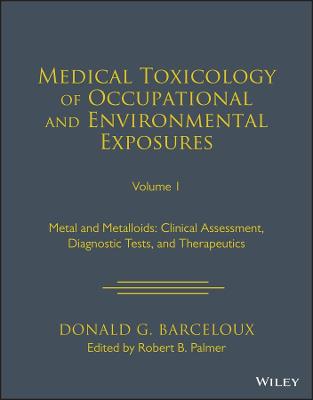Guidelines for Managing Abnormal Situations
 -15%
portes grátis
-15%
portes grátis
Guidelines for Managing Abnormal Situations
CCPS (Center for Chemical Process Safety)
John Wiley & Sons Inc
11/2022
272
Dura
Inglês
9781119862871
15 a 20 dias
666
Descrição não disponível.
List of Figures xi
List of Tables xiii
List of Example Incidents xv
Acronyms and Abbreviations xvii
Glossary xxi
Acknowledgments xxxi
Preface xxxv
Dedication xxxvi
1 Introduction 1
1.1 Purpose and Scope of the Book 1
1.2 What Are Abnormal Situations? 2
1.3 The Business Case for Managing Abnormal Situations 4
1.4 Content and Organization of the Book 5
2 Process Safety and Management of Abnormal Situations 9
2.1 Impact on Process Safety 9
2.2 The Case for Positive Management of Abnormal Situations 11
2.3 Adverse Outcomes of Abnormal Situations 13
2.4 Importance of Training for Abnormal Situations 22
2.5 Safety Culture and the Management of Abnormal Situations 23
3 Abnormal Situations and Key Relevance to Process Plant Operations 27
3.1 Focus Areas for Abnormal Situation Management 27
3.1.1 ASM Research Areas 27
3.1.2 Additional Focus Areas 30
3.2 Abnormal Situations Affecting Process Plant Operations 32
3.2.1 Process Control Systems -the First Line of Defense 40
3.2.2 Frontline Operators 44
3.3 Management of Abnormal Situations and Links to Risk Based Process Safety 48
3.3.1 Commitment to Process Safety 50
3.3.2 Understand Hazards and Risk 50
3.3.3 Manage Risk 50
3.3.4 Learn from Experience 51
3.3.5 Additional RBPS Elements Related to Management of Abnormal Situations 52
3.4 Procedures and Operating Modes for Managing Abnormal Situations 53
3.4.1 General Principles for Procedure Development 53
3.4.2 Operating Modes 58
3.4.3 Types of Material Being Processed 78
4 Education for Managing Abnormal Situations 85
4.1 Educating the Trainer 85
4.2 Primary Target Populations for Training 86
4.2.1 Front-line Operators 87
4.2.2 Operations Management 89
4.2.3 Plant Engineers/Technicians 90
4.2.4 Process Safety Engineers 91
4.2.5 Design Engineers 91
4.2.6 Environmental Health, Safety and Security (EHSS) Personnel 100
4.2.7 Technical Experts 100
4.2.8 Other Parties 102
4.3 Guidance for Organizing and Structuring Training 102
4.3.1 Organization of Training 102
4.3.2 Structure of Training Topics 103
4.3.3 Skills and Competencies of Trainers 106
4.4 Summary 106
5 Tools and Methods for Managing Abnormal Situations 107
5.1 Tools and Methods for Control of Abnormal Situations 108
5.2 Predictive Hazard Identification 112
5.2.1 Hazard Recognition for Abnormal Situations 113
5.2.2 HIRA Approach to Hazard Prediction 113
5.3 Process Control Systems 115
5.3.1 Process Trend Monitoring 117
5.3.2 Alarm Management 119
5.3.3 Big Data 122
5.3.4 Advanced Diagnostics and Artificial Intelligence 123
5.4 Policies and Administrative Procedures 124
5.4.1 Expectations of Policies and Administrative Procedures 126
5.4.2 The Relationship of Policies to Abnormal Situation Management 126
5.4.3 Process Metrics 129
5.5 Operating Procedures 130
5.5.1 Standard Operating Procedures 131
5.5.2 Emergency Procedures 132
5.5.3 Transient Operation Procedures 133
5.5.4 Preparing Written Procedures 134
5.6 Training and Drills 135
5.7 Ergonomics and Other Human Factors 139
5.7.1 HMI (Human Machine Interface) System 140
5.7.2 Control Room Ergonomics/ Human Factor Assessment 142
5.7.3 Crew Resource Management 143
5.8 Learning from Abnormal Situation Incidents 147
5.9 Change Management 149
5.9.1 Management of Change Guideline Tools 150
5.9.2 Management of Organizational Change 153
5.9.3 Pre-Startup Safety Review 154
6 Continuous Improvement for Managing Abnormal Situations 155
6.1 General 155
6.2 Landscape of Available Metrics for Improvement 156
6.3 Abnormal Situations and Incident Investigations 158
6.4 Auditing 159
6.5 Management Review and Continuous Improvement 162
6.6 Summary 163
7 Case Studies/lessons Learned 165
7.1 Case Study 7.1 - Air France, 2009 166
7.1.1 Background 166
7.1.2 Incident Overview - Air France AF 447 169
7.1.3 Speed Measurement on A330 Aircraft 169
7.1.4 A330 Flight Control Systems 171
7.1.5 Airbus Pitot Tube History 173
7.1.6 The Incident - Air France AF 447 173
7.1.7 Lessons Learned Relevant to Abnormal Situation Management 178
7.1.8 Epilogue 182
7.2 Case Study 7.2 - Texaco Refinery, Milford Haven, Wales, July 1994 184
7.2.1 Background 184
7.2.2 Incident Overview - Texaco Milford Haven 185
7.2.3 Outline Process Description of Milford Haven Refinery 186
7.2.4 Controls and Instrumentation 188
7.2.5 Some Relevant History at the Refinery 189
7.2.6 The Incident 190
7.2.7 Immediate Cause 193
7.2.8 Lessons Learned Relevant to Abnormal Situation Management 193
7.2.9 Epilogue 198
7.3 Case Study 7.3 - The Hickson And Welch Fire, 1992, Castleford, UK 199
7.3.1 Background 199
7.3.2 Incident Overview - Hickson and Welch fire 200
7.3.3 Outline Process Description of Meissner Plant 201
7.3.4 History of Meissner Plant Prior to Incident 203
7.3.5 The Incident 205
7.3.6 Immediate Causes 206
7.3.7 Lessons Learned Relevant to Abnormal Situation Management 207
7.3.8 Epilogue 210
Appendix A Managing Abnormal Situations - Training Materials 211
Appendix B ASM Joint Research and Development Consortium: Background 213
References 215
Index 225
List of Tables xiii
List of Example Incidents xv
Acronyms and Abbreviations xvii
Glossary xxi
Acknowledgments xxxi
Preface xxxv
Dedication xxxvi
1 Introduction 1
1.1 Purpose and Scope of the Book 1
1.2 What Are Abnormal Situations? 2
1.3 The Business Case for Managing Abnormal Situations 4
1.4 Content and Organization of the Book 5
2 Process Safety and Management of Abnormal Situations 9
2.1 Impact on Process Safety 9
2.2 The Case for Positive Management of Abnormal Situations 11
2.3 Adverse Outcomes of Abnormal Situations 13
2.4 Importance of Training for Abnormal Situations 22
2.5 Safety Culture and the Management of Abnormal Situations 23
3 Abnormal Situations and Key Relevance to Process Plant Operations 27
3.1 Focus Areas for Abnormal Situation Management 27
3.1.1 ASM Research Areas 27
3.1.2 Additional Focus Areas 30
3.2 Abnormal Situations Affecting Process Plant Operations 32
3.2.1 Process Control Systems -the First Line of Defense 40
3.2.2 Frontline Operators 44
3.3 Management of Abnormal Situations and Links to Risk Based Process Safety 48
3.3.1 Commitment to Process Safety 50
3.3.2 Understand Hazards and Risk 50
3.3.3 Manage Risk 50
3.3.4 Learn from Experience 51
3.3.5 Additional RBPS Elements Related to Management of Abnormal Situations 52
3.4 Procedures and Operating Modes for Managing Abnormal Situations 53
3.4.1 General Principles for Procedure Development 53
3.4.2 Operating Modes 58
3.4.3 Types of Material Being Processed 78
4 Education for Managing Abnormal Situations 85
4.1 Educating the Trainer 85
4.2 Primary Target Populations for Training 86
4.2.1 Front-line Operators 87
4.2.2 Operations Management 89
4.2.3 Plant Engineers/Technicians 90
4.2.4 Process Safety Engineers 91
4.2.5 Design Engineers 91
4.2.6 Environmental Health, Safety and Security (EHSS) Personnel 100
4.2.7 Technical Experts 100
4.2.8 Other Parties 102
4.3 Guidance for Organizing and Structuring Training 102
4.3.1 Organization of Training 102
4.3.2 Structure of Training Topics 103
4.3.3 Skills and Competencies of Trainers 106
4.4 Summary 106
5 Tools and Methods for Managing Abnormal Situations 107
5.1 Tools and Methods for Control of Abnormal Situations 108
5.2 Predictive Hazard Identification 112
5.2.1 Hazard Recognition for Abnormal Situations 113
5.2.2 HIRA Approach to Hazard Prediction 113
5.3 Process Control Systems 115
5.3.1 Process Trend Monitoring 117
5.3.2 Alarm Management 119
5.3.3 Big Data 122
5.3.4 Advanced Diagnostics and Artificial Intelligence 123
5.4 Policies and Administrative Procedures 124
5.4.1 Expectations of Policies and Administrative Procedures 126
5.4.2 The Relationship of Policies to Abnormal Situation Management 126
5.4.3 Process Metrics 129
5.5 Operating Procedures 130
5.5.1 Standard Operating Procedures 131
5.5.2 Emergency Procedures 132
5.5.3 Transient Operation Procedures 133
5.5.4 Preparing Written Procedures 134
5.6 Training and Drills 135
5.7 Ergonomics and Other Human Factors 139
5.7.1 HMI (Human Machine Interface) System 140
5.7.2 Control Room Ergonomics/ Human Factor Assessment 142
5.7.3 Crew Resource Management 143
5.8 Learning from Abnormal Situation Incidents 147
5.9 Change Management 149
5.9.1 Management of Change Guideline Tools 150
5.9.2 Management of Organizational Change 153
5.9.3 Pre-Startup Safety Review 154
6 Continuous Improvement for Managing Abnormal Situations 155
6.1 General 155
6.2 Landscape of Available Metrics for Improvement 156
6.3 Abnormal Situations and Incident Investigations 158
6.4 Auditing 159
6.5 Management Review and Continuous Improvement 162
6.6 Summary 163
7 Case Studies/lessons Learned 165
7.1 Case Study 7.1 - Air France, 2009 166
7.1.1 Background 166
7.1.2 Incident Overview - Air France AF 447 169
7.1.3 Speed Measurement on A330 Aircraft 169
7.1.4 A330 Flight Control Systems 171
7.1.5 Airbus Pitot Tube History 173
7.1.6 The Incident - Air France AF 447 173
7.1.7 Lessons Learned Relevant to Abnormal Situation Management 178
7.1.8 Epilogue 182
7.2 Case Study 7.2 - Texaco Refinery, Milford Haven, Wales, July 1994 184
7.2.1 Background 184
7.2.2 Incident Overview - Texaco Milford Haven 185
7.2.3 Outline Process Description of Milford Haven Refinery 186
7.2.4 Controls and Instrumentation 188
7.2.5 Some Relevant History at the Refinery 189
7.2.6 The Incident 190
7.2.7 Immediate Cause 193
7.2.8 Lessons Learned Relevant to Abnormal Situation Management 193
7.2.9 Epilogue 198
7.3 Case Study 7.3 - The Hickson And Welch Fire, 1992, Castleford, UK 199
7.3.1 Background 199
7.3.2 Incident Overview - Hickson and Welch fire 200
7.3.3 Outline Process Description of Meissner Plant 201
7.3.4 History of Meissner Plant Prior to Incident 203
7.3.5 The Incident 205
7.3.6 Immediate Causes 206
7.3.7 Lessons Learned Relevant to Abnormal Situation Management 207
7.3.8 Epilogue 210
Appendix A Managing Abnormal Situations - Training Materials 211
Appendix B ASM Joint Research and Development Consortium: Background 213
References 215
Index 225
Este título pertence ao(s) assunto(s) indicados(s). Para ver outros títulos clique no assunto desejado.
List of Figures xi
List of Tables xiii
List of Example Incidents xv
Acronyms and Abbreviations xvii
Glossary xxi
Acknowledgments xxxi
Preface xxxv
Dedication xxxvi
1 Introduction 1
1.1 Purpose and Scope of the Book 1
1.2 What Are Abnormal Situations? 2
1.3 The Business Case for Managing Abnormal Situations 4
1.4 Content and Organization of the Book 5
2 Process Safety and Management of Abnormal Situations 9
2.1 Impact on Process Safety 9
2.2 The Case for Positive Management of Abnormal Situations 11
2.3 Adverse Outcomes of Abnormal Situations 13
2.4 Importance of Training for Abnormal Situations 22
2.5 Safety Culture and the Management of Abnormal Situations 23
3 Abnormal Situations and Key Relevance to Process Plant Operations 27
3.1 Focus Areas for Abnormal Situation Management 27
3.1.1 ASM Research Areas 27
3.1.2 Additional Focus Areas 30
3.2 Abnormal Situations Affecting Process Plant Operations 32
3.2.1 Process Control Systems -the First Line of Defense 40
3.2.2 Frontline Operators 44
3.3 Management of Abnormal Situations and Links to Risk Based Process Safety 48
3.3.1 Commitment to Process Safety 50
3.3.2 Understand Hazards and Risk 50
3.3.3 Manage Risk 50
3.3.4 Learn from Experience 51
3.3.5 Additional RBPS Elements Related to Management of Abnormal Situations 52
3.4 Procedures and Operating Modes for Managing Abnormal Situations 53
3.4.1 General Principles for Procedure Development 53
3.4.2 Operating Modes 58
3.4.3 Types of Material Being Processed 78
4 Education for Managing Abnormal Situations 85
4.1 Educating the Trainer 85
4.2 Primary Target Populations for Training 86
4.2.1 Front-line Operators 87
4.2.2 Operations Management 89
4.2.3 Plant Engineers/Technicians 90
4.2.4 Process Safety Engineers 91
4.2.5 Design Engineers 91
4.2.6 Environmental Health, Safety and Security (EHSS) Personnel 100
4.2.7 Technical Experts 100
4.2.8 Other Parties 102
4.3 Guidance for Organizing and Structuring Training 102
4.3.1 Organization of Training 102
4.3.2 Structure of Training Topics 103
4.3.3 Skills and Competencies of Trainers 106
4.4 Summary 106
5 Tools and Methods for Managing Abnormal Situations 107
5.1 Tools and Methods for Control of Abnormal Situations 108
5.2 Predictive Hazard Identification 112
5.2.1 Hazard Recognition for Abnormal Situations 113
5.2.2 HIRA Approach to Hazard Prediction 113
5.3 Process Control Systems 115
5.3.1 Process Trend Monitoring 117
5.3.2 Alarm Management 119
5.3.3 Big Data 122
5.3.4 Advanced Diagnostics and Artificial Intelligence 123
5.4 Policies and Administrative Procedures 124
5.4.1 Expectations of Policies and Administrative Procedures 126
5.4.2 The Relationship of Policies to Abnormal Situation Management 126
5.4.3 Process Metrics 129
5.5 Operating Procedures 130
5.5.1 Standard Operating Procedures 131
5.5.2 Emergency Procedures 132
5.5.3 Transient Operation Procedures 133
5.5.4 Preparing Written Procedures 134
5.6 Training and Drills 135
5.7 Ergonomics and Other Human Factors 139
5.7.1 HMI (Human Machine Interface) System 140
5.7.2 Control Room Ergonomics/ Human Factor Assessment 142
5.7.3 Crew Resource Management 143
5.8 Learning from Abnormal Situation Incidents 147
5.9 Change Management 149
5.9.1 Management of Change Guideline Tools 150
5.9.2 Management of Organizational Change 153
5.9.3 Pre-Startup Safety Review 154
6 Continuous Improvement for Managing Abnormal Situations 155
6.1 General 155
6.2 Landscape of Available Metrics for Improvement 156
6.3 Abnormal Situations and Incident Investigations 158
6.4 Auditing 159
6.5 Management Review and Continuous Improvement 162
6.6 Summary 163
7 Case Studies/lessons Learned 165
7.1 Case Study 7.1 - Air France, 2009 166
7.1.1 Background 166
7.1.2 Incident Overview - Air France AF 447 169
7.1.3 Speed Measurement on A330 Aircraft 169
7.1.4 A330 Flight Control Systems 171
7.1.5 Airbus Pitot Tube History 173
7.1.6 The Incident - Air France AF 447 173
7.1.7 Lessons Learned Relevant to Abnormal Situation Management 178
7.1.8 Epilogue 182
7.2 Case Study 7.2 - Texaco Refinery, Milford Haven, Wales, July 1994 184
7.2.1 Background 184
7.2.2 Incident Overview - Texaco Milford Haven 185
7.2.3 Outline Process Description of Milford Haven Refinery 186
7.2.4 Controls and Instrumentation 188
7.2.5 Some Relevant History at the Refinery 189
7.2.6 The Incident 190
7.2.7 Immediate Cause 193
7.2.8 Lessons Learned Relevant to Abnormal Situation Management 193
7.2.9 Epilogue 198
7.3 Case Study 7.3 - The Hickson And Welch Fire, 1992, Castleford, UK 199
7.3.1 Background 199
7.3.2 Incident Overview - Hickson and Welch fire 200
7.3.3 Outline Process Description of Meissner Plant 201
7.3.4 History of Meissner Plant Prior to Incident 203
7.3.5 The Incident 205
7.3.6 Immediate Causes 206
7.3.7 Lessons Learned Relevant to Abnormal Situation Management 207
7.3.8 Epilogue 210
Appendix A Managing Abnormal Situations - Training Materials 211
Appendix B ASM Joint Research and Development Consortium: Background 213
References 215
Index 225
List of Tables xiii
List of Example Incidents xv
Acronyms and Abbreviations xvii
Glossary xxi
Acknowledgments xxxi
Preface xxxv
Dedication xxxvi
1 Introduction 1
1.1 Purpose and Scope of the Book 1
1.2 What Are Abnormal Situations? 2
1.3 The Business Case for Managing Abnormal Situations 4
1.4 Content and Organization of the Book 5
2 Process Safety and Management of Abnormal Situations 9
2.1 Impact on Process Safety 9
2.2 The Case for Positive Management of Abnormal Situations 11
2.3 Adverse Outcomes of Abnormal Situations 13
2.4 Importance of Training for Abnormal Situations 22
2.5 Safety Culture and the Management of Abnormal Situations 23
3 Abnormal Situations and Key Relevance to Process Plant Operations 27
3.1 Focus Areas for Abnormal Situation Management 27
3.1.1 ASM Research Areas 27
3.1.2 Additional Focus Areas 30
3.2 Abnormal Situations Affecting Process Plant Operations 32
3.2.1 Process Control Systems -the First Line of Defense 40
3.2.2 Frontline Operators 44
3.3 Management of Abnormal Situations and Links to Risk Based Process Safety 48
3.3.1 Commitment to Process Safety 50
3.3.2 Understand Hazards and Risk 50
3.3.3 Manage Risk 50
3.3.4 Learn from Experience 51
3.3.5 Additional RBPS Elements Related to Management of Abnormal Situations 52
3.4 Procedures and Operating Modes for Managing Abnormal Situations 53
3.4.1 General Principles for Procedure Development 53
3.4.2 Operating Modes 58
3.4.3 Types of Material Being Processed 78
4 Education for Managing Abnormal Situations 85
4.1 Educating the Trainer 85
4.2 Primary Target Populations for Training 86
4.2.1 Front-line Operators 87
4.2.2 Operations Management 89
4.2.3 Plant Engineers/Technicians 90
4.2.4 Process Safety Engineers 91
4.2.5 Design Engineers 91
4.2.6 Environmental Health, Safety and Security (EHSS) Personnel 100
4.2.7 Technical Experts 100
4.2.8 Other Parties 102
4.3 Guidance for Organizing and Structuring Training 102
4.3.1 Organization of Training 102
4.3.2 Structure of Training Topics 103
4.3.3 Skills and Competencies of Trainers 106
4.4 Summary 106
5 Tools and Methods for Managing Abnormal Situations 107
5.1 Tools and Methods for Control of Abnormal Situations 108
5.2 Predictive Hazard Identification 112
5.2.1 Hazard Recognition for Abnormal Situations 113
5.2.2 HIRA Approach to Hazard Prediction 113
5.3 Process Control Systems 115
5.3.1 Process Trend Monitoring 117
5.3.2 Alarm Management 119
5.3.3 Big Data 122
5.3.4 Advanced Diagnostics and Artificial Intelligence 123
5.4 Policies and Administrative Procedures 124
5.4.1 Expectations of Policies and Administrative Procedures 126
5.4.2 The Relationship of Policies to Abnormal Situation Management 126
5.4.3 Process Metrics 129
5.5 Operating Procedures 130
5.5.1 Standard Operating Procedures 131
5.5.2 Emergency Procedures 132
5.5.3 Transient Operation Procedures 133
5.5.4 Preparing Written Procedures 134
5.6 Training and Drills 135
5.7 Ergonomics and Other Human Factors 139
5.7.1 HMI (Human Machine Interface) System 140
5.7.2 Control Room Ergonomics/ Human Factor Assessment 142
5.7.3 Crew Resource Management 143
5.8 Learning from Abnormal Situation Incidents 147
5.9 Change Management 149
5.9.1 Management of Change Guideline Tools 150
5.9.2 Management of Organizational Change 153
5.9.3 Pre-Startup Safety Review 154
6 Continuous Improvement for Managing Abnormal Situations 155
6.1 General 155
6.2 Landscape of Available Metrics for Improvement 156
6.3 Abnormal Situations and Incident Investigations 158
6.4 Auditing 159
6.5 Management Review and Continuous Improvement 162
6.6 Summary 163
7 Case Studies/lessons Learned 165
7.1 Case Study 7.1 - Air France, 2009 166
7.1.1 Background 166
7.1.2 Incident Overview - Air France AF 447 169
7.1.3 Speed Measurement on A330 Aircraft 169
7.1.4 A330 Flight Control Systems 171
7.1.5 Airbus Pitot Tube History 173
7.1.6 The Incident - Air France AF 447 173
7.1.7 Lessons Learned Relevant to Abnormal Situation Management 178
7.1.8 Epilogue 182
7.2 Case Study 7.2 - Texaco Refinery, Milford Haven, Wales, July 1994 184
7.2.1 Background 184
7.2.2 Incident Overview - Texaco Milford Haven 185
7.2.3 Outline Process Description of Milford Haven Refinery 186
7.2.4 Controls and Instrumentation 188
7.2.5 Some Relevant History at the Refinery 189
7.2.6 The Incident 190
7.2.7 Immediate Cause 193
7.2.8 Lessons Learned Relevant to Abnormal Situation Management 193
7.2.9 Epilogue 198
7.3 Case Study 7.3 - The Hickson And Welch Fire, 1992, Castleford, UK 199
7.3.1 Background 199
7.3.2 Incident Overview - Hickson and Welch fire 200
7.3.3 Outline Process Description of Meissner Plant 201
7.3.4 History of Meissner Plant Prior to Incident 203
7.3.5 The Incident 205
7.3.6 Immediate Causes 206
7.3.7 Lessons Learned Relevant to Abnormal Situation Management 207
7.3.8 Epilogue 210
Appendix A Managing Abnormal Situations - Training Materials 211
Appendix B ASM Joint Research and Development Consortium: Background 213
References 215
Index 225
Este título pertence ao(s) assunto(s) indicados(s). Para ver outros títulos clique no assunto desejado.







